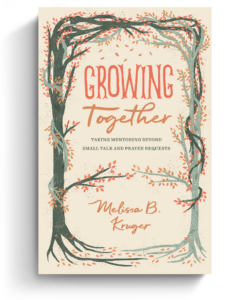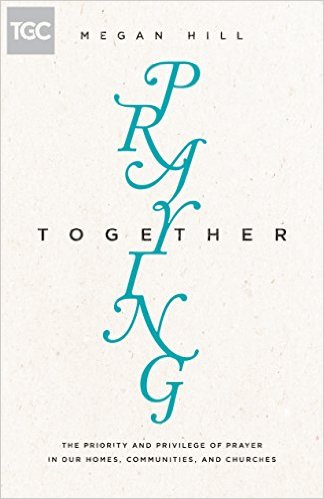Last week, I attended our church small group in a member’s living room. As everyone arrived, we arranged ourselves in a circle: on chairs, couches, benches, and even on the floor. After a few minutes, the leader began the meeting by asking, “Okay, what items do we have for prayer?” People uncapped their pens and jotted notes on the back of the week’s study sheet as various members gave requests. Then we prayed about them together.
I’m sure this is a familiar scenario to many of us. We typically begin our prayer times by identifying what we are going to pray about. This is good. Prayer is an activity with content—the Westminster Shorter Catechism calls it “an offering up of our desires unto God”—and we must recognize something we desire before we can ask for it.
Especially in a group, where our goal is unified prayer from every heart, advance direction is particularly helpful. Here we will look at three approaches: choosing a single topic, praying systematically through items on a list, or taking requests from every person. These formats aren’t mutually exclusive—I’ve been in many prayer meetings that allot time to all three—but each has value as we cast our burdens on the Lord together.
1. Praying Together with a Single Focus
First, we can choose in advance a single focus for praying together. This option allows us to develop that topic more fully in prayer and to together invest our hearts more deeply in the cause. In selecting our topic, we must always remember that God himself sets the priorities for our prayers. We come to the hallowed one—the kingdom-establisher, the bread-giver, the sin-forgiver, the Satan-defeater (Matt. 6:9–13)—asking him to do those things he delights to do.
Under this framework we can identify a particular need, often a burden that we naturally share with those with whom we pray. For example, we might choose to dedicate ourselves to praying together for:
- churches to be planted in a specific place,
- a particular person to come to Christ and be saved,
- a sick Christian brother or sister to be healed,
- certain pervasive sins in our community to be confessed and forsaken,
- or our persecuted brothers and sisters to be vindicated.
2. Praying Together through a Comprehensive List
Second, we can pray together in a systematic way for the whole number of gospel opportunities, churches, and individuals. Throughout the New Testament Epistles, the apostles and the churches deliberately and constantly “remember” one another in prayer (Eph. 1:16; Col. 4:18; 1 Thess. 1:2–3; 2 Tim. 1:3; Phil. 1:4; Philem. 4; Heb. 13:3). But, sadly, we often forget to pray for certain things, allowing the more urgent or more familiar situations to dominate our prayer time.
In order to remember, we can use directories or lists to pray together for each of the:
- members of our local church;
- residents, employees, students, or volunteers in the places we live or work;
- churches in our community or in our denomination;
- civil authorities over our city, county, state, and nation;
- missionaries supported by our local church or working for a particular organization;
- nations of the world and the church in those nations.
3. Praying Together as Needs Arise
Finally, we can pray together for the personal requests of group members. Praying together for one another—bearing one another’s burdens and rejoicing in their blessings (Gal. 6:2, Rom. 12:15)—produces the fruit of mutual love. And in order to pray for one another, we have to know their needs. Recently I had a conversation with a woman who was reluctant to ask her Bible study group to pray about a significant concern in her life. “Every time we take requests,” she told me, “I almost start to say something. But then I don’t. Maybe I will next week.”
As uncomfortable or humbled or exposed as we might sometimes feel about sharing our prayer needs, we can remember that our requests will allow others to bring us before the throne and that our relationships with them will deepen as a result. The apostle Paul himself frequently included personal prayer requests in his letters: that he would be given gospel opportunities (Col. 4:3), that he could visit the Thessalonian believers (1 Thess. 3:10), that his ministry would have success (2 Thess. 3:1), and that he could see his friend Philemon (Philem. 22). If Paul did not hesitate to ask for prayer, we should not either.
In turn, we should receive the genuine concerns of others with love. Sinners saved by grace have no room for self-righteousness. And even imperfect or immature requests are our opportunity to bear the burdens of Christ’s brothers and sisters. Let us not be like the disciples who thought the needs of little children were too trifling for Jesus’s prayer. Let us be like Jesus who lived according to the eternal kingdom and eagerly prayed for its weakest members (Matt. 19:13–15).
Praying Together with Confidence
Whether we’re praying together with a specific focus, a systematic plan, or according to the requests of others, our task seems enormous. We can never pray together for everything. The vast number of items for prayer can quickly overwhelm a single pair of friends or a small handful of coworkers, briefly bowing their heads on a Friday morning.
But we can take heart! Our prayers are just one precious drop in that heavenly bowl that contains all the prayers of God’s people from Adam until now (Rev. 5:8). Our prayers are just one note in that divine groan that the Spirit utters before the Father (Rom. 8:26). And our prayers are just one “Amen” to that perfect petition that the Son never stops praying on our behalf (Heb. 7:25). Our own prayer lists always fall short, but the requests before the throne never do.
Brothers and sisters, despite our weaknesses and failings, before the Father, by the help of the Spirit and through the blood of the Son, each request we pray together is God’s means for accomplishing his perfect purpose in the world.
Editors’ note: This excerpt is adapted from Megan Hill’s new book, Praying Together: The Priority and Privilege of Prayer in Our Homes, Communities, and Churches (Crossway, 2016). Praying Together is being released in connection with TGC’s Women’s Initiative.
Involved in Women’s Ministry? Add This to Your Discipleship Toolkit
 We need one another. Yet we don’t always know how to develop deep relationships to help us grow in the Christian life. Younger believers benefit from the guidance and wisdom of more mature saints as their faith deepens. But too often, potential mentors lack clarity and training on how to engage in discipling those they can influence.
We need one another. Yet we don’t always know how to develop deep relationships to help us grow in the Christian life. Younger believers benefit from the guidance and wisdom of more mature saints as their faith deepens. But too often, potential mentors lack clarity and training on how to engage in discipling those they can influence.
Whether you’re longing to find a spiritual mentor or hoping to serve as a guide for someone else, we have a FREE resource to encourage and equip you. In Growing Together: Taking Mentoring Beyond Small Talk and Prayer Requests, Melissa Kruger, TGC’s vice president of discipleship programming, offers encouraging lessons to guide conversations that promote spiritual growth in both the mentee and mentor.


































